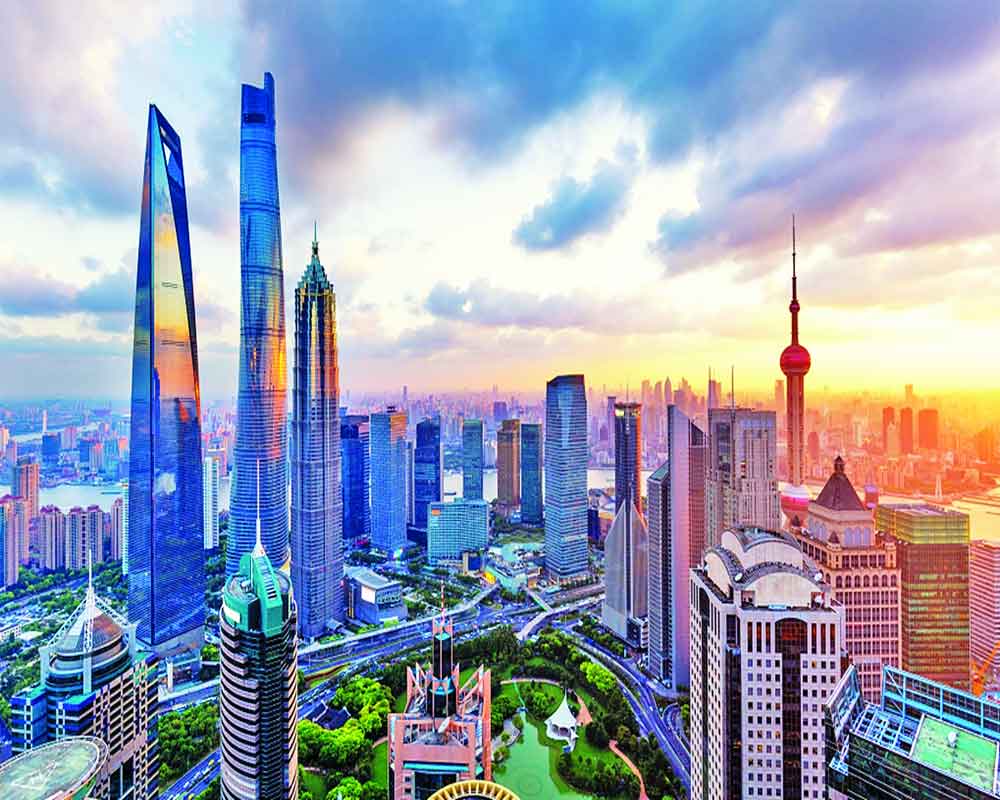China though making strides in the economic field is on a slippery slope. Its economic model exploits countries and is hegemonistic in approach
China has been hogging the bright limelight for the last two decades, almost since the beginning of the current century for a growing economic powerhouse status and a country destined to overtake the US in economic and geopolitical might. The way it was developing its infrastructure and creating a most cost-competitive global manufacturing base was, to say the least, mind-boggling. But what was being projected and envisaged in 2003 is not being reiterated today, twenty years later. What is the reason?
The last two years have shaken the economic pillars of China. The real estate sector which accounts for nearly 30 percent of the Chinese economy has slipped into deep recessionary doldrums. Evidenced by the collapse of the Evergrande, the real estate business entity stricken by high debts and its serviceability crisis, the overall picture of the country’s economy and its short and medium-term outlook is anything but bright. The writer happened to visit China in 2014 and is privy to scores of high-rise multistoried residential buildings on the outskirts of its IT hub city Cheng Du and all the buildings are vacant–looking like deserted ghost houses.
The situation is, regrettably the same, nay worse, nine years later in 2023. The flats remain unsold in large numbers with the allottee- buyers unable to pay their housing loan installments due to shrinking or unsteady incomes. The writer also saw that at that time, the average cost of goods and services in China was 3 times that of India, which today is more than 4 times. Let me cite a few figures in regard to China’s economy vis- a -vis India. Central Govt. debt (percentage of GDP) is 76.89 for China and 83.4 for India. While the GDP growth rate for China is three percent, for India, it is 6.84. The Debt per capita (in USD) in China is 7164 and for India, it is 1724. The inflation rate (percent) for China is 2 percent and for India, it is 6.89.
The above is 2022 figures extracted from www.statista.com. What do the above figures convey? Let me put point-wise analytical inferences.
The economic soundness indices of China and India are quite comparable, with important parameters tilted heavily in India’s favor. The reason? China has grown too fast too much and its growth is unsustainable. The figures speak for themselves. China’s model of economic growth is undemocratic, with capitalist processes foisted on a communist, totalitarian base. This provides an unstable, unsustainable model of economic growth. China has kept the inflation rate low by artificially tight fiscal means through restricted resort to printing more currency, even during the Covid-19 period when GDP and income growth sharply declined. This, seen along with the Communist regime’s restriction on citizens’ savings and withdrawals from their bank accounts, is already causing grave social distress leading to protests and uprisings. With the growth rate declining to 3 percent and the country now in the grip of a most serious Covid-19 pandemic, the short-term economic outlook of the country looks extremely grim.
China’s past growth has been fuelled by exports rather than domestic consumption but with the recent global economic downturn caused by Covid-19 and now the protracted Russia-Ukraine war, global demand has heavily declined and China’s huge factories are idling to the extent of 40-50 percent on an average. This is exacerbating the already burgeoning domestic debt crisis, with many banks going bust.
It is relevant to observe that China is also present in the midst of an energy crisis with its huge thermal power electricity generating plants starving of coal whose imports from Australia have declined in the recent past due to the worsening of its political relations with that country. The shortage of electricity has put that much additional strain on its manufacturing industry.
The worst thing that could have happened to China is its much-touted BRI running into a quandary. Thanks to China’s opaque policies and systems and unabashedly hegemonic designs, its BRI investments in many countries have run into logjams and the BRI project is turning out to be an unqualified failure. Taking over ports and establishing military bases in the BRI host countries has sullied China’s image and shown it as a business-unfriendly hegemonic power with predatory designs.
It is also important to note India’s advantageous position over China under the present economic circumstances. India’s cost of production is less than one-fourth of China’s and with a much younger labor workforce; it sits on a much better pedestal for manufacturing sector growth. It can easily wrest from China the position of the global manufacturing hub. The most important factor in India’s favor is its present geopolitical goodwill and China’s worsening relations with major countries owing to its dubious role in the Covid-19 pandemic. In the present situation of political, economic, and social turmoil all over the world in the wake of the Russia-Ukraine war with overt or covert military involvement of many other countries, India is poised well to take the big economic leap forward ahead of China.
China’s economic model has shown now beyond a semblance of doubt that the economic progress of a country is long-term sustainable only with a fair model delivering equitable benefits to collaborating countries. It can never provide long-term, stable economic progress with an exploitative model and undemocratic systems behind it, which are not compatible with the natural development patterns of humans on this planet.
(The writer is a Management Consultant based in New Delhi. The views expressed are personal)


























